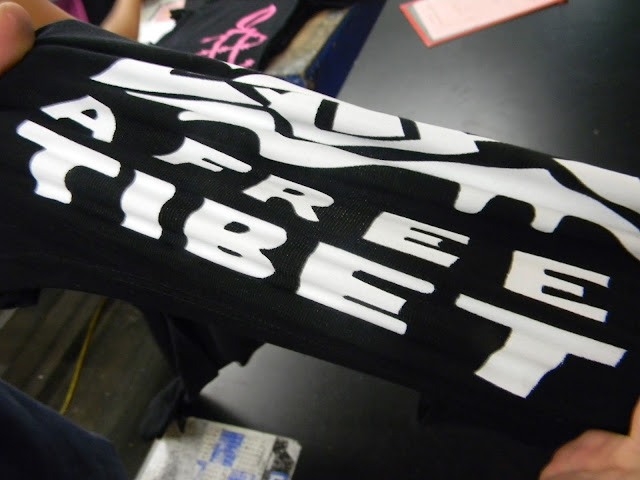Some screen printers, who print directly onto t-shirts or who print plastisol heat transfers, will stretch the garment just before printing or heat pressing. By performing this, the weave in the shirt opens up permitting the ink to better penetrate the fibers in the fabric. This practice is believed to prevent cracking from the ink.
Don't stretch the garment before heat pressing or the fabrics will pucker after the first washing.
Although stretching garments might perform when printing t-shirts or heat pressing sublimation heat transfers, you should not stretch shirts prior to heat pressing a polyurethane heat transfer film. Here's why. After the shirt is washed, it's going to shrink back to its original shape. When this happens, the polyurethane will contract, resulting in the puckering of the heat transfer film.
As opposed to stretching a garment prior to pressing, you ought to pre-press it. This causes the shirt to shrink. Additionally, if there is certainly any moisture inside the fabric, pre-pressing will dry the shirt. Moisture can potentially result in adhesion issues. Pressing the garment also offers a smooth surface for the application of the heat transfer appliqu¨|..
Why are Overall performance Garments so Difficult to Print?
The mixture of bleed, stretch, construction restrictions and wearer abuse (earning them the nickname “Slick-Willie”) suggest they're not easily emblazoned … even with screen printing.
1.The initial barrier is adhesion. Slick Willie normally consists of polyester with spandex for elasticity. The latter affords a lesser raw material price than the nylon garments but each kinds are very elastic and comprised of very thin, slick threads. This leaves precious small surface area-since sublimation inks depend on mechanical greater than chemical adhesion, they adore a higher surface-area textile. Surface area is really a scarce luxury with all the low denier yarns and tight, flat construction of efficiency fabrics.
2. Subsequent may be the “bungee-cord” issue: Performance fabrics wick away moisture and conform to each and every nook and cranny around the wearer. If the plastisol does not stretch, the garment won’t form-fit the wearer. But, if it conforms, isn't probably to be as durable.
3. In the event the garment is of the polyester persuasion, all but its bleached-white version will be dyed with colorants that consist of plasticizer -the main constituent of your sublimation ink. The caveat is the fact that most of these garments usually are not white and dyed-dark goods are prone to dye migration or bleeding.
4. If this is not bad sufficient, just wait until you hear what they’re going to do with these goods after you print them! They are going to stretch them more than muscle, pad or bullet-proof vest, sweat profusely in them for hours on finish, scrape them on anything and every little thing with which they come into make contact with and them dump them inside a high-heat wash load having a good dose of rifle-cleaning compounds (also known as laundry detergents) and expect the shirts to last at the very least a few seasons.
More information: http://www.skyimagepaper.com/
SU ZHOU FULL COLOR PAPER INDUSTRIAL CO.LTD
XiangCheng District,SuZhou,JIangSu,China
86-025-86628894
SU ZHOU FULL COLOR PAPER INDUSTRIAL CO.LTD




No comments:
Post a Comment